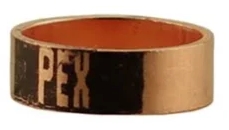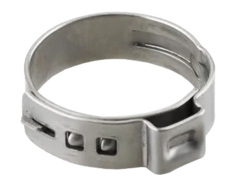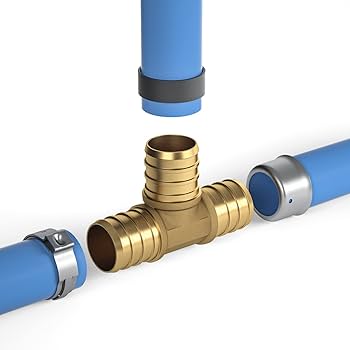PEX (cross-linked polyethylene) pipes and fittings are commonly used in plumbing systems due to their flexibility, durability, and ease of installation. Here’s a general guide on how to use PEX pipe and fittings:
1.Prepare the Work Area: Ensure the work area is clean and free from debris. Measure and cut the PEX pipe to the required length using a PEX tubing cutter. Make sure the cut is straight and clean to ensure a proper seal.
2.Select Fittings: Choose the appropriate PEX fittings for your project. There are several types of fittings available, including crimp, clamp (also known as cinch), push-fit, and expansion fittings. The choice of fitting depends on the specific requirements of your plumbing system.
3.Prepare the Pipe Ends: If using crimp or clamp fittings, slide the appropriate crimp ring or clamp onto the PEX pipe. Ensure the end of the pipe is smooth and free from burrs.
4.Install the Fittings:
(1) Crimp Fittings: Insert the crimp fitting into the end of the PEX pipe. Position the crimp ring over the PEX pipe and fitting, ensuring it is centered over the ribs of the fitting. Use a crimp tool to compress the crimp ring securely onto the PEX pipe.
(2) Clamp (Cinch) Fittings: Slide the clamp onto the PEX pipe. Insert the fitting into the end of the pipe. Position the clamp over the fitting and use a cinch tool to compress the clamp securely onto the PEX pipe.

(3) Push-Fit Fittings: Simply push the PEX pipe into the fitting until it reaches the built-in stop. Ensure the pipe is fully inserted and seated in the fitting.
Expansion Fittings: Use an expansion tool to expand the end of the PEX pipe. Insert the expanded end onto the fitting, and allow the pipe to contract, creating a tight seal.

5.Testing: Once all fittings are installed, test the connections for leaks. Turn on the water supply and check for any signs of leakage at the fittings. If any leaks are detected, recheck the connections and make necessary adjustments.
6.Secure and Support: Secure the PEX pipe to the structure using appropriate clamps or straps. Ensure the pipe is adequately supported to prevent sagging or movement.
7.Insulate (Optional): Depending on your local building codes and climate conditions, you may need to insulate the PEX pipes to prevent freezing in cold temperatures.
Always follow manufacturer instructions and local plumbing codes when installing PEX pipes and fittings. If you’re not comfortable working with plumbing systems, it’s advisable to hire a licensed plumber to ensure proper installation and compliance with regulations.
Post time: Mar-22-2024
